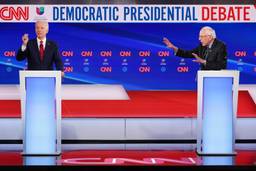We’ve long known that executive pay has skyrocketed during the last 40 years – and especially during the last 20. As the Economic Policy Institute has reported, the average CEO makes roughly 300 times the average worker – up from 100 times the average in the early 1990s and 40 times the average in the 1970s. In this new Gilded Age, we are inundated with stories about how executives – even in taxpayer-subsidized industries like banking – are paying themselves record salaries. This is nothing new – in fact, it’s lately been a bragging point for firms in their efforts to attract talent.
So, then, why is Corporate America suddenly so shy about compensation rates?
This is the question after a recent Washington Post report on big corporations lobbying against a new regulation compelling them “to report the median annual total compensation for workers and the annual total compensation for the chief executive, and to report the ratio of the two.” Companies, of course, were already obligated to publish CEO pay rates – the new provision just asks them to publish the same information about the average worker on a company-by-company basis.
The fact that this modest provision has prompted such an aggressive opposition campaign suggests business leaders fear something. Do they fear that revelations of huge pay gaps will alienate socially conscious customers? Or is it a fear of something more? I’d say the latter.
First and foremost, it’s likely CEOs don’t want these ratios being published because they would fuel shareholder activism that is already threatening to curtail executive abuse.
Remember, last year, Congress granted shareholders “say on pay” powers, allowing them to cast nonbinding votes on executive pay packages. These votes, however, happen in an information vacuum whereby shareholders only see executive pay data, but not how that data compares to the rest of a company’s compensation rates. Should firms now have to publicize that comparison, executives know that downward shareholder pressure on their salaries will only intensify.
The second reason CEOs don’t want these ratios being published may involve the ongoing discussion about corporate tax reform.
As the deficit has exploded, incriminating facts have leaked out showing that many corporations pay more to their executives than they pay in taxes (and many firms pay no corporate income tax at all). One of the easiest solution to this problem is to base corporate tax rates on a company’s pay gap.
How would this work? One of the most innovative ideas is to replace the loophole-ridden corporate tax system with a flat rate that is then multiplied by the CEO-to-worker pay ratio. This would create a tax incentive for salary fairness, while also allowing corporations to choose their own tax rate. If a company wants a low tax bill, it can shrink the chasm between what it pays its suits and what it pays its rank-and-file workers. If, by contrast, a company is happy with high tax rates, it can maintain a big pay gap. But as the executive class well knows, without the median worker pay data, this kind of reform cannot happen - and so they are trying to prevent the data from ever getting out.
These are just some of the ways new compensation information could be applied. But no matter how it is used, the point remains: Since We the People chartered these corporations, we have every right to know more about their salary structure. Doing so will give us the information we need to make sure the middle class once again benefits from our economy.
That may not serve the interests of CEOs, but it is in the best interest of America.
David Sirota is an award-winning investigative journalist and an In These Times senior editor. He served as speechwriter for Bernie Sanders’ 2020 campaign. Follow him on Twitter @davidsirota.








